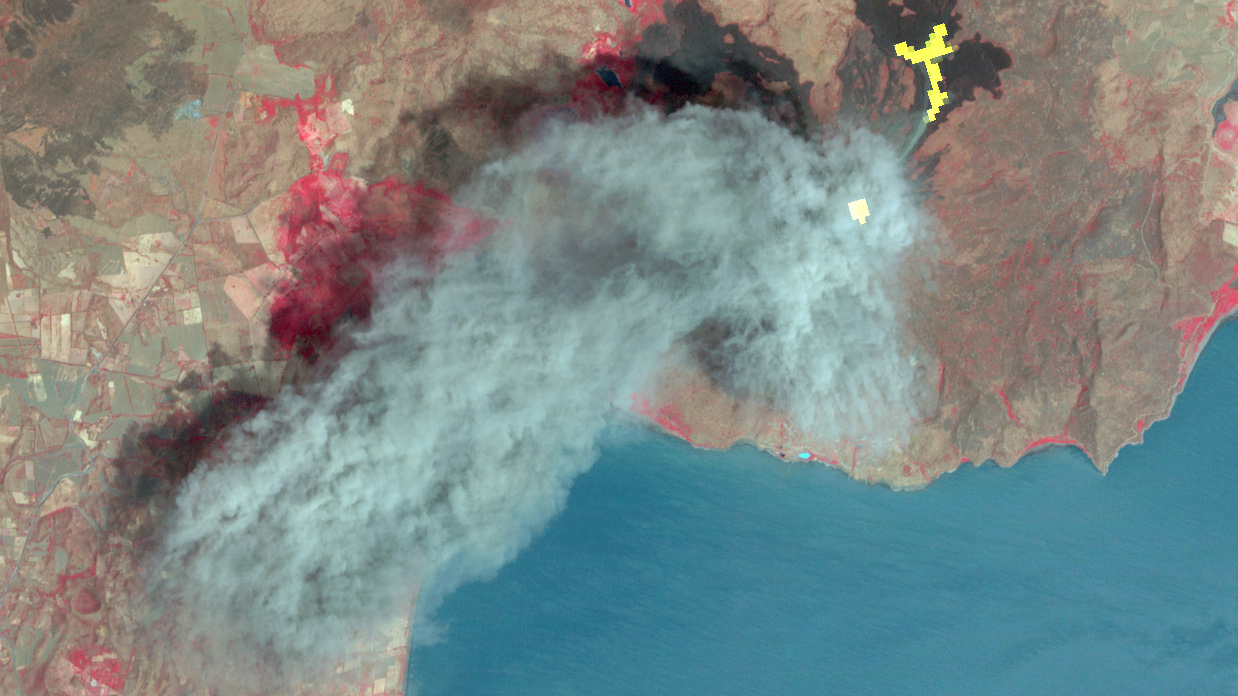
Beginning today, all Earth imagery from a prolific Japanese remote sensing instrument operating aboard NASA’s Terra spacecraft since late 1999 is now available to users everywhere at no cost.
The public will have unlimited access to the complete 16-plus-year database for Japan’s Ministry of Economy, Trade and Industry (METI) Advanced Spaceborne Thermal Emission and Reflection Radiometer (ASTER) instrument, which images Earth to map and monitor the changing surface of our planet. ASTER’s database currently consists of more than 2.95 million individual scenes. The content ranges from massive scars across the Oklahoma landscape from an EF-5 tornado and the devastating aftermath of flooding in Pakistan, to volcanic eruptions in Iceland and wildfires in California.
Previously, users could access ASTER’s global digital topographic maps of Earth online at no cost, but paid METI a nominal fee to order other ASTER data products.
In announcing the change in policy, METI and NASA cited ASTER’s longevity and continued strong environmental monitoring capabilities. Launched in 1999, ASTER has far exceeded its five-year design life and will continue to operate for the foreseeable future as part of the suite of five Earth-observing instruments on Terra.
“We anticipate a dramatic increase in the number of users of our data, with new and exciting results to come,” said Michael Abrams, ASTER science team leader at NASA’s Jet Propulsion Laboratory in Pasadena, California, home to ASTER’s U.S. science team. ASTER data are processed into products using algorithms developed at JPL and the National Institute of Advanced Industrial Science and Technology (AIST) in Japan. A joint U.S./Japan science team validates and calibrates the instrument and data products.
ASTER is used to create detailed maps of land surface temperature, reflectance and elevation. The instrument acquires images in visible and thermal infrared wavelengths, with spatial resolutions ranging from about 50 to 300 feet (15 to 90 meters). ASTER data cover 99 percent of Earth’s landmass and span from 83 degrees north latitude to 83 degrees south. A single downward-looking ASTER scene covers an area on the ground measuring about 37-by-37 miles (60-by-60-kilometers).
ASTER uses its near-infrared spectral band and downward- and backward-viewing telescopes to create stereo-pair images, merging two slightly offset two-dimensional images to create the three-dimensional effect of depth. Each elevation measurement point in the data is 98 feet (30 meters) apart.
The broad spectral coverage and high spectral resolution of ASTER provide scientists in numerous disciplines with critical information for surface mapping and monitoring of dynamic conditions and changes over time. Example applications include monitoring glacial advances and retreats, monitoring potentially active volcanoes, identifying crop stress, determining cloud morphology and physical properties, evaluating wetlands, monitoring thermal pollution, monitoring coral reef degradation, mapping surface temperatures of soils and geology, and measuring surface heat balance.
ASTER data are now available via electronic download from NASA’s Land Processes Distributed Active Archive Center (LP DAAC) at the U.S. Geological Survey’s (USGS) Earth Resources Observation and Science Center in Sioux Falls, South Dakota, and from AIST. To access the data, visit:
https://lpdaac.usgs.gov/dataset_discovery/aster
or
NASA uses the vantage point of space to increase our understanding of our home planet, improve lives and safeguard our future. NASA develops new ways to observe and study Earth’s interconnected natural systems with long-term data records. The agency freely shares this unique knowledge and works with institutions around the world to gain new insights into how our planet is changing.
For more information about ASTER, visit:
For more information on NASA’s Terra mission, visit:
For more information about NASA’s Earth science activities, visit:
News Media Contact
Alan Buis
Jet Propulsion Laboratory, Pasadena, Calif.
818-354-0474
Alan.buis@jpl.nasa.gov

